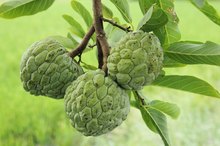How to Measure Citric Acid in Fruits Simply
Citrus fruits such as lemons, limes, oranges and grapefruits contain citric acid and have a pH range between 2 and 6 -- pH is the scale that determines how acidic or basic a substance is with neutral having a pH value of 7. Human blood, for example, is slightly alkaline at 7.3 to 7.4. The amount of citric acid in fruits can be simply measured with pH test strips that can be purchased at most pharmacies.
Cut the fruit in half with the knife.
What Causes Fruits to Mold?
Learn More
Swipe the pH test strip across the surface of the fruit interior. Make sure the strip gets wet from the fruit juice.
Wait 30 seconds and note the color change of the test strip. The color change will be different for each fruit tested.
- Citrus fruits such as lemons, limes, oranges and grapefruits contain citric acid and have a pH range between 2 and 6 -- pH is the scale that determines how acidic or basic a substance is with neutral having a pH value of 7.
- The amount of citric acid in fruits can be simply measured with pH test strips that can be purchased at most pharmacies.
Fruit with Beta-Carotene
Learn More
Compare the color on the pH test strip to the chart that came with the test strip packaging. The colors between the two will not be an exact match so make an approximation to determine the fruit's pH level.
Tips
Run a second test to confirm your results.
Test multiple pieces of fruit as the pH will slightly change based on the fruit variety, age and sugar content.
Warnings
Use caution when cutting a round fruit such as an orange -- as the blade will have a tendency to slip off the surface unless the knife is sharp.
Related Articles
References
Resources
- Optimum Sports Nutrition; Michael Colgan
Writer Bio
Jack Kaltmann is a Las Vegas-based writer with more than 25 years of professional experience in corporate communications. He is a published author of several books and feature articles for national publications such as "American Artist" and "Inside Kung-Fu." Kaltmann holds a Bachelor of Arts in English from Miami University and is a retired nationally certified personal trainer.









